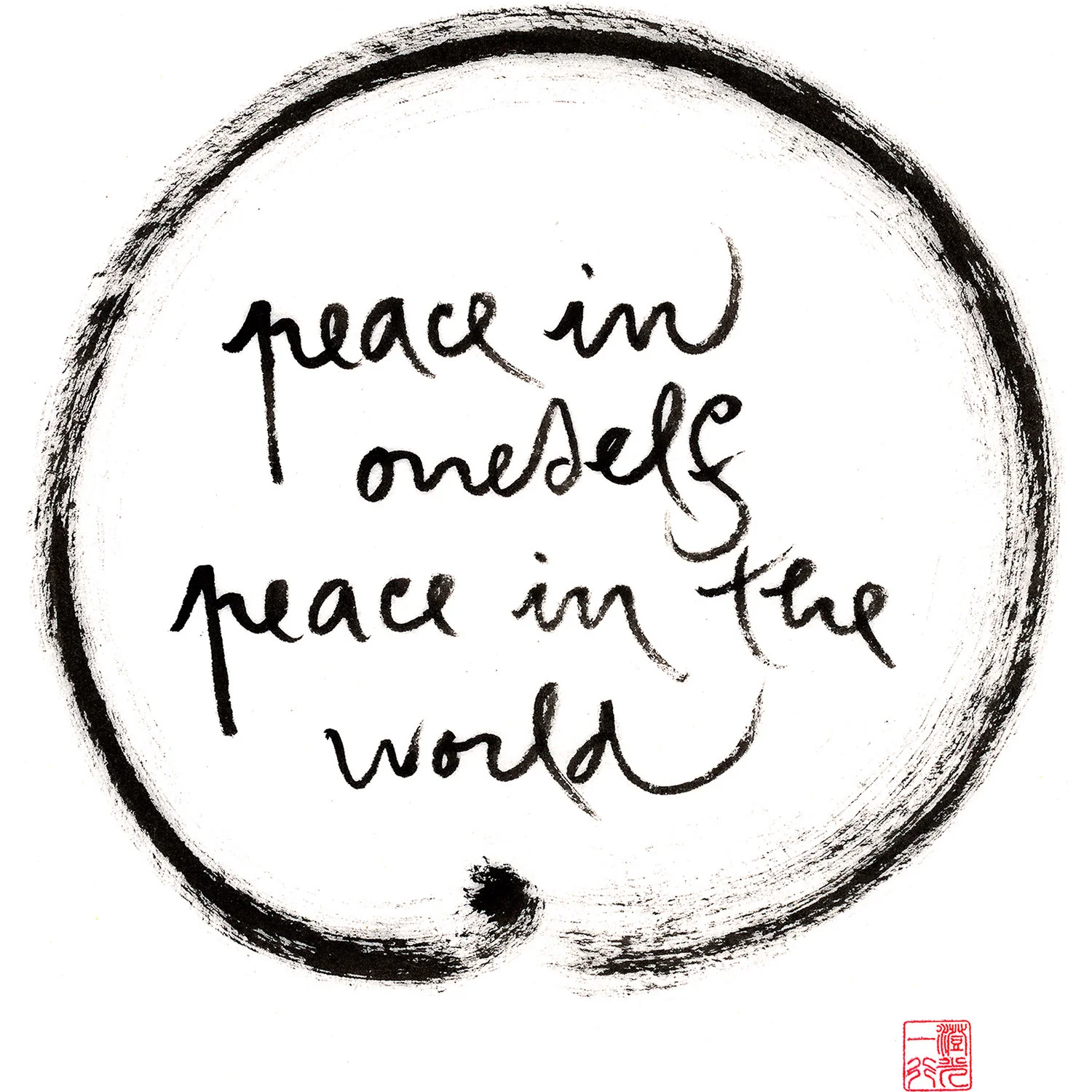 Excerpts from Peace Begins Here: Palestinians and Israelis Listening to Each Other by Thich Nhat Hanh from Parallax Press
Excerpts from Peace Begins Here: Palestinians and Israelis Listening to Each Other by Thich Nhat Hanh from Parallax Press
Found via https://plumvillage.org/articles/peace-between-palestinians-and-israelis from May 30, 2021
At a 2003 retreat in Plum Village for Palestinians and Israelis, Thich Nhat Hanh offered insights into the situation in the Middle East based on Buddhist teachings as well as his own experience of war in Vietnam.
This retreat was one of a number of retreats at Plum Village Monastery in France where fifteen to thirty Palestinians and Israelis were invited to practice mindfulness together for two weeks with a wider community.
“For the past few years, groups of Palestinians and Israelis have come to Plum Village to practice mindfulness. When they first come, they are often suspicious of each other. They can’t look at each other with sympathetic eyes. But with the practice and the support of the community, they are able to calm their suffering, their anger, their suspicion, and their hate. After several days, they are able to see that the other group also suffers. It takes time.
The practice of deep, compassionate listening is crucial. If you don’t have compassion, you cannot listen, because what the other person is saying may water the seeds of irritation and anger in you, and you may lose the compassion you have and no longer be able to listen. If you know how to listen for one hour, deeply, with compassion, the other person will suffer much less. It is very healing and transforming.
Deep listening goes together with the practice of loving speech. We try to speak of our suffering without blaming the other side. We speak without bitterness, blame, or anger. This helps others understand our situation and our suffering. If we use deep listening and loving speech, communication will be possible.
Many people in the world are concerned about the suffering in the Middle East. If you can organize a people’s peace conference, you will have tremendous power to educate yourself, the other group, and the whole world on how to make peace.
When warring parties come to a peace conference, each side is full of suspicion, anger, and distrust. With those emotions in their hearts, not much can be achieved, because there is no peace inside as a basis for making peace with the other. Negotiators for peace should have some peace in themselves. At least they should know how to handle their anger, fear, and suspicion.
In peace talks people normally make a lot of proposals and have many discussions. A real peace conference should be organized like a retreat, and both groups should be given time to calm themselves and take care of their emotions, their fear, and suspicion. Some of us know how to help. Some of us from the Middle East know about the practice of calming, of resting, and of embracing our fear and our anger, and we can help prepare the ground for mutual understanding. If peace negotiations fail, it is because people don’t start with this. They are in a hurry and want to discuss things right away. Mutual understanding is not possible when there is a lot of suffering, fear, and suspicion on each side.
We cannot look for God or for peace in the government. We should look for peace within our heart. The real peace process has to come from ourselves, within our group and our people. We should not continue to blame the other side for not practicing peace. We have to practice peace in order to help the other side to make peace.
We can’t wait for our governments to initiate the peace process. They may continue for a long time and not arrive anywhere. We have to take the situation in hand and organize the peace process through our own practice.
We must use our intelligence. We need a strategy based on understanding, compassion, and nonviolence. If you think that not enough people in other countries will support you, you are wrong. There are many countries who would like to help you.
Both sides have a lot of fear, despair, discrimination, and anger—our real enemies. In Plum Village we remind each other that our real enemies are not human beings—they are division, hatred, suspicion, anger, and despair. And as we recognize and identify them, we try to transform them and remove them from ourselves and others. The teaching and practice are very clear.
I see the path quite clearly. If you want to live, live in a beautiful way, with a lot of meaning, and surely you will be successful. Living for the sake of compassion, understanding, and nonviolence is very beautiful. I tread this path and I will never renounce it. If I were in your situation, I would follow this path. I learned this lesson in my home country. Hundreds of thousands of people died in frustration, because they embraced the path of violence. They killed each other, brothers and sisters, and I don’t want you to do the same.
Peace is possible. We are not talking vaguely, we mean concrete action. That action is directed to ourselves and to the world at the same time. It is a process of transformation, healing, and peace. The spiritual power of such action can change the world.
If you are committed to nonviolence and ask your own people to stop the conflict, your voice will be stronger than the voices of the world leaders who are creating violence. Many people in the world will support you, and you will be in the spotlight. To plan for that, you need a lot of time, a lot of practice, a lot of mindful breathing, and a lot of mindful walking. Then everyone will have to see you and listen to you. This is my hope.”
